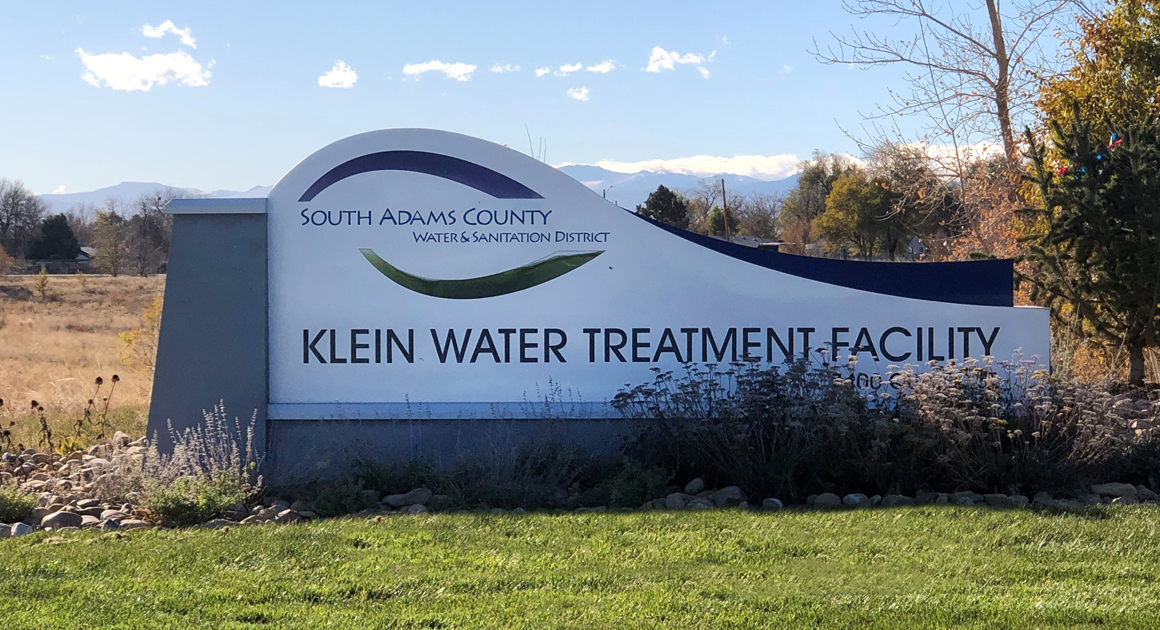DENVER, Colo. — The South Adams County Water and Sanitation District (District) is enhancing its water treatment process to meet EPA Health Advisory Levels (HALs) for per- and polyfluoroalkyl substances (PFAS) in drinking water supplies.
Deemed “forever chemicals,” PFAS is a group of human-made chemicals used in many applications, including stain- and water-resistant fabrics and carpeting, cleaning products, paints, and firefighting foams. PFAS are resistant to grease, oil, water, and heat and may enter water supplies from landfills, the use of firefighting foam (e.g., at airports, fire training facilities, petroleum fires, etc.), industrial sites, and wastewater treatment plant discharge.
The District’s water supply, serving over 67,000 residents in Commerce City and parts of unincorporated Adams County, comes primarily from 13 groundwater supply wells. As it continues to meet all federal and state drinking water requirements, the District has been proactively pursuing PFAS reduction strategies since it first discovered a low-level presence in its water supply through voluntary testing in 2018. Upon discovery, the District stopped drawing from its most impacted wells and has been purchasing additional treated water to blend into its supply to reduce PFAS levels along with optimizing use of their existing granular activated carbon treatment system.
Recently, the EPA lowered its interim lifetime HAL for perfluorooctanoic acid (PFOA) and perfluorooctane sulfonate (PFOS) from 70 parts per trillion (ppt) combined to 0.004 ppt for PFOA and 0.02 ppt for PFOS.
While the District maintains test levels below 70 ppt for PFOA and PFOS, the new HALs are set so low that it is not yet possible to detect the presence of the compounds at these levels scientifically.
“Ever since the District first began voluntarily testing for PFAS, we have been monitoring for these compounds and working to reduce their impact on our customers. The EPA has moved the goalposts, and we are taking steps to reduce the presence of PFAS even further. We are committed to finding long-term, sustainable solutions to offer our community high-quality drinking water.”
District Manager Abel Moreno
To tackle the challenge, the District has hired leading environmental and construction services firm Brown and Caldwell to design a new 18 million gallons per day (MGD) ion exchange (IX) process at its Klein Water Treatment Facility. IX treatment is currently the most effective technology in removing PFAS/PFOA, consisting of a highly porous resin that acts as a powerful magnet to adsorb and hold onto the substances. The new system at the Klein facility will consist of seven IX treatment trains, a 375,000-gallon equalization tank, and six vertical turbine pumps to feed the IX trains from the District’s 13 groundwater supply wells.
Furthermore, nine 5-micron cartridge filters will be installed to remove particulate matter in the water before reaching the IX trains, thus increasing the efficacy of the treatment process.
“We commend the District for taking this important step to achieve a cost-effective, reliable, and safe water future,” said Brown and Caldwell Client Manager and Process Lead Laurie Sullivan. “PFAS is a nationwide challenge and the District is working diligently to put numerous measures in place to monitor and treat contaminants to maintain regulatory compliance.”
Scheduled for completion by the end of 2026, the new IX treatment facility will provide a peak combined capacity of 26 MGD.
###
About South Adams County Water and Sanitation District
The South Adams County Water and Sanitation District is a special district providing water and sanitary sewer service to over 67,000 residents in Commerce City and parts of unincorporated Adams County. For more information about the District, please visit www.sacwsd.org
###
